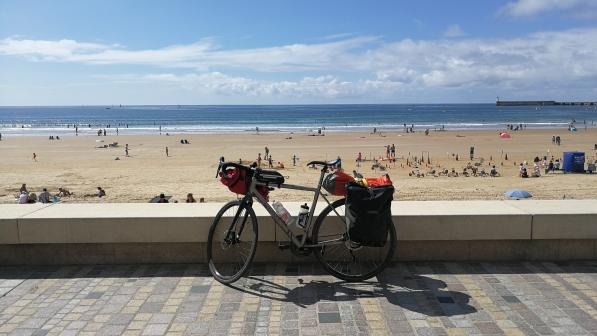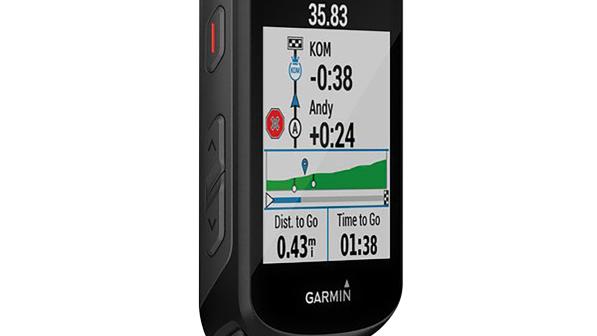Travellers’ tales: From the mountains to the sea

I’d wanted to ride a EuroVelo route – one of the 19 long-distance cycle routes through Europe and the British Isles – for a while. Neither myself nor my partner Yvonne were the most experienced of cycling tourers. But we were keen to try something more challenging.
We decided that the 890km EuroVelo 17 Rhone Cycle Route was one we could manage. We chose to deviate from the official route at two points.
First, opting to follow the old Swiss Rhone Route, R1, going north around Lake Geneva, and second, after the penultimate stage, rather than heading south from Arles to Port St Louis, we would follow the alternative, heading west to Sète.
The route starts in central Switzerland, at Furka Pass, a few kilometres west of Andermatt, and follows the river south-west through a glacial valley before turning north to Lake Geneva. We would follow the north shore through Montreux and Lausanne, curving south to Geneva.
Once in France, it continues west to Lyon, where it turns sharply south, running all the way to the Mediterranean. Although it’s predominantly downhill, there are some stages with 500+ metres of ascent, particularly in Switzerland, with some short sections having gradients of 20%.
Train troubles
We booked Interrail Passes to get us from Caen (overnight ferry from Portsmouth) to Andermatt, and back from Montpellier, allowing for two days’ travel each way.

Planning the rail journey was far from easy, as there are restrictions on taking fully assembled bikes on different types of trains. For the high-speed TGVs, there are a limited number of spaces, and these have to be booked well in advance.
There are fewer restrictions on the regional TER trains, and you don’t have to reserve bike spaces, but they tend to be slower and don’t always follow the most direct route. Also, some of these trains require that you reserve a seat in advance. At times, planning the rail journey began to feel like a weird, Kafkaesque exercise in futility.
Finally arriving in Andermatt after two frustrating days of rail travel, we discovered that the Furka Pass was still snowbound – in mid-June. This meant that instead of taking the Postbus to the top of the pass, we had to take the train to Oberwald the next morning, where at last we could begin our tour.
Setting off
Our first day of cycling 50km from Oberwald to Brig was breath taking. We followed the unruly infant Rhône through the alpine valley of Goms, surrounded by majestic snow-capped mountains on both sides.
While it was mostly downhill, we had about 250 metres of ascent, including a couple of short, stiff climbs on dirt tracks. That should have been it except that I’d booked our overnight accommodation not in Brig, but in the village of Ried-Brig, 2.5km outside the town.
I didn’t realise that getting to Ried-Brig meant climbing 200 metres, at an average gradient of 9%, rising at times to 16%. Still, the beauty of the landscape, the intoxicating alpine air, and the sense of excitement that comes with the start of a cycling tour made it all worthwhile.

Stage 2 saw us cycling 67km to Sion, stopping in Raron to visit Europe’s largest underground church, then on to Sierre for lunch, where it started raining. A persistent drizzle accompanied us the rest of the way to Sion. It had morphed into heavy rain by the next morning as we rode from our digs to the centre of town for breakfast.
By the time we set out for Montreux, the weather had improved, but the overnight storm meant a couple of detours to get round flooded underpasses at Riddes and Vouvry. We got caught in a thunderstorm near Collombey, having to take shelter beneath a bridge, but it soon petered out. After 81km we arrived in Montreux on the east shore of Lake Geneva.
Riding in the rain
Next day saw us pressing on around the north side of Lake Geneva, passing through Corsier-sur-Vevey, home of Charlie Chaplin for the last 24 years of his life. It was a fairly lumpy 54km. One 275m climb of 20% saw me having to get off and push, while Yvonne waited for me at the top, trying not to look smug.
By the time we rode into Lausanne in the early afternoon, the heavens had opened, so we were grateful to squelch our way into a busy restaurant not far from the lake shore and feast on a traditional Swiss dish of rostis, bacon and egg.
Joyously, the rain had stopped by the time we set off again, and a warm sun guided us on to Etoy, our destination for the night.
An early start saw us rolling through undulating countryside, with the lake to the south and the terraced vineyards of La Côte rising above us to the north, passing through Perroy, noted for its wines, reaching Nyon just after midday.

The sixth stage would be our longest at 90km, and the one with the most climbing, close to 900 metres. The cycle path leaving Geneva was easy to follow and the weather was gorgeous.
We deviated from the planned route a couple of kilometres south of Chancy, taking us through a fantastic up and down (but mostly up) woodland route. When we emerged from the woods back onto the planned route, it was just another few kilometres to Vulbens and we were no longer in Switzerland.
Dramatic views
Then came perhaps the most dramatic stage of the route so far, as the road wound steadily up the north and west side of the Vuache Ridge, with spectacular views across to the fort in l’Ecluse Gorge and, further south, the Longeray Viaduct. We pressed on to Seyssel for lunch and cycled over its narrow 19th-century chain bridge just for the hell of it.
The sky began to cloud over and become increasingly threatening as we continued south to Chanaz. Knowing the Canal de Savières linked the Rhône to France’s largest and deepest natural lake, Lac du Bourget, I decided to cycle the few kilometres east to visit the lake. Yvonne, looking up at the sky, politely declined.
It all went well until, on the return, what had been the odd rumble of thunder in the distance seemed much closer. About 3km from Chanaz, with the smell of ozone hanging heavy in the air, the storm finally erupted. I took shelter as best I could from the bucketing rain, with lightning fizzing and thunder cracking all around.

After 10 minutes, the storm began to diminish slightly, and I decided to press on to Chanaz. The incredulous looks of the locals as I rolled to a halt beside the covered terrace of the village bar gave some indication as to the state I was in, confirmed by the bemused expression on Yvonne’s face as she sat waiting with a beer.
After that, the next three stages, through Morestel, Loyettes and into Lyon, were relatively easy and uneventful. The sun came out as we were leaving Chanaz, and the weather stayed warm and bright for the next three days.
After a rest day in Lyon came the most unattractive stage of the entire route: 71km to Serrières. For long stretches the route was sandwiched between a motorway on the right, and large industrial/commercial zones on the left.
Wanting to avoid a rough, off-road section, we missed the official road alternative and ended up having to negotiate a path through a disused road deliberately strewn with boulders, just south Sérézin-du-Rhône.
Scenic cycling
We had a much more scenic ride the following day, on down to Valence, following the Rhône’s east bank before crossing the river to Sarras. Thereafter it was a beautiful route through orchards, vineyards and shaded woodland, into Tournon-sur- Rhône and its companion town on the east side, Tain L’Hermitage, both noted for their fine wines and well worth a visit.
The wind was up next morning, and we were cycling straight into it as we headed south to Montélimar. It made for a few hairy bridge crossings.
The stage from Montélimar to Mornas followed a similar profile, although the wind had faded. Highlights included the huge statue of the Archangel Michael on the limestone cliffs above Viviers, and the 13th-century Pont St Esprit with its 20 arches.

From Mornas, it was a short, 53-km stage to Avignon. We spent a couple of hours in Chateauneuf-du-Papes, and a little further south got hopelessly lost in Sorgues as my Garmin us on a seemingly endless loop around the town.
Avignon made up for the trauma. It’s a fascinating, walled city crammed full of architectural and historic sights. It was also hosting an annual month-long theatre and arts festival. There were dazzling acrobatic displays, magicians, opera singers, musicians and puppet shows. It was a blast.
Then it was 67km to Arles, another city packed with cultural sights, from the Roman amphitheatre and colosseum to the hospital where Vincent van Gogh recovered after cutting off his ear.
It was here we said goodbye to the river as it continued its passage south to the Mediterranean. Instead, after overnighting in Arles, we followed the alternative branch of EuroVelo 17, heading west through the Camargue to Aigues-Mortes.
We set out the next morning on the final stage of our tour, picking up the Canal du Rhône à Sète at La Grande-Motte as it continued west. There was time for a swim at Plage du Couchant, and lunch at Vic-la-Gardiole before we arrived at our end point in the lovely port town of Sète.
We celebrated with a glass or two of hard-earned champagne. We had completed our first – but definitely not our last – EuroVelo route.


